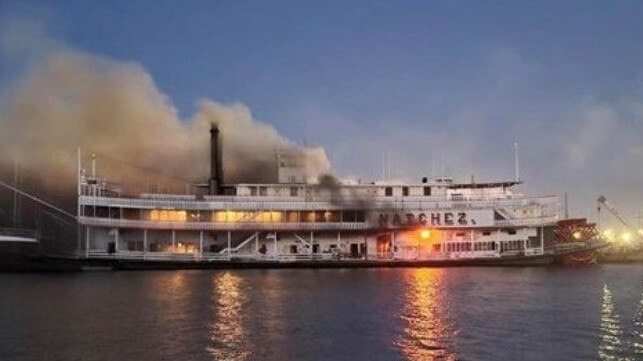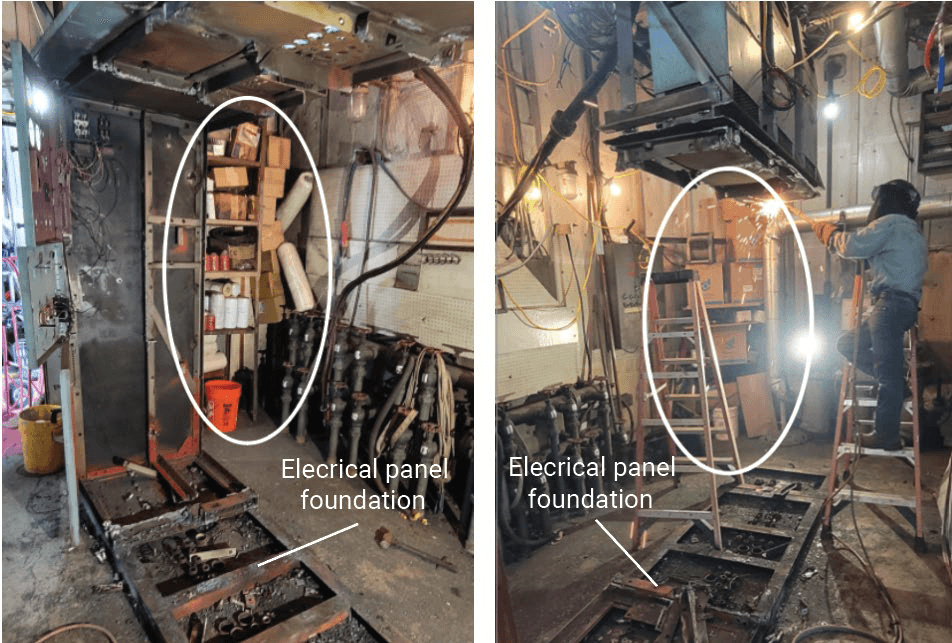NTSB: Hot Work Near Flammables Caused Fire on Passenger Steamboat

The National Transportation Safety Board (NTSB) has determined that hot work near a stack of cardboard boxes caused a fire aboard the passenger vessel Natchez, a Mississippi River riverboat homeported in New Orleans.
The Natchez began a deep overhaul in January 2021 and was expected to return to regular passenger service this year. The work included extensive work on her boilers, generators and electrical system.
On May 3, 2022, a crew of contractors came aboard to replace the ship's main electrical panel. The scope of work for the day included prepping the work area and cutting out the old panel with an acetylene torch. A marine fabrication contractor checked the space for fire hazards, and the vessel's chief engineer had deckhands put a piece of sheet metal between the work area and an adjacent diesel generator to protect it from sparks. A worker stood by on fire watch with a hose and extinguisher while the cutting proceeded.
The work crew left at about 1700, and a diesel engine tech was in the space until 1800. They all told NTSB that they saw nothing unusual before they departed.
At about 1945, the security watchstander aboard Natchez saw smoke coming from the engine room. He called 911, and the New Orleans Fire Department responded quickly and put out the fire. Most of the damage was limited to the area around the electrical panel, though there was minor damage in other areas of the engine room and some smoke damage in the decks above the fire. The total cost of repair came to about $1.5 million, and no injuries or pollution were reported.
After the fire, the Bureau of Alcohol, Tobacco, Firearms and Explosives (ATF) helped out with a forensic investigation. Based on burn patterns, ATF determined that the fire began along the bulkhead, next to where the work was completed that day. The vessel operator provided NTSB with photos of the space from the day of the accident, and the images showed that cardboard boxes and plastic containers had been stowed on wooden shelves about 2-3 feet away from where the hot work had been performed.

Courtesy NTSB / New Orleans Steamboat Company
In the course of the investigation, NTSB found that the vessel owner and the contractor had no written policies for hot work safety, as required by OSHA. The owner told NTSB that it relied upon its contractors to have fire safety and hot work policies, and the project superintendent said that he deemed the work site safe for hot work.
29 CFR requires a 35-foot distance between combustibles and hot work, or, if this is not possible, ensuring that the combustibles are well-covered and shielded with flameproof material. The superintendent and the welder who did the work told investigators that they were not aware of this requirement.
NTSB determined that a spark from the welding likely landed in the stack of cardboard boxes, where it smoldered for hours before finally igniting.
"It is critical to evaluate work areas for fire hazards and ensure that combustibles are relocated or protected with flameproofed covers/curtains or otherwise shielded with sheet metal. In addition, crewmembers involved in hot work should be trained to identify hazards such as combustibles and to take action to remove or protect them from hot work," concluded NTSB.
The vessel also lacked a fire detection system (she was not required by regulation to install one) and her fixed firefighting system had been disabled during her overhaul. NTSB did not identify these elements as contributing factors in the fire.
